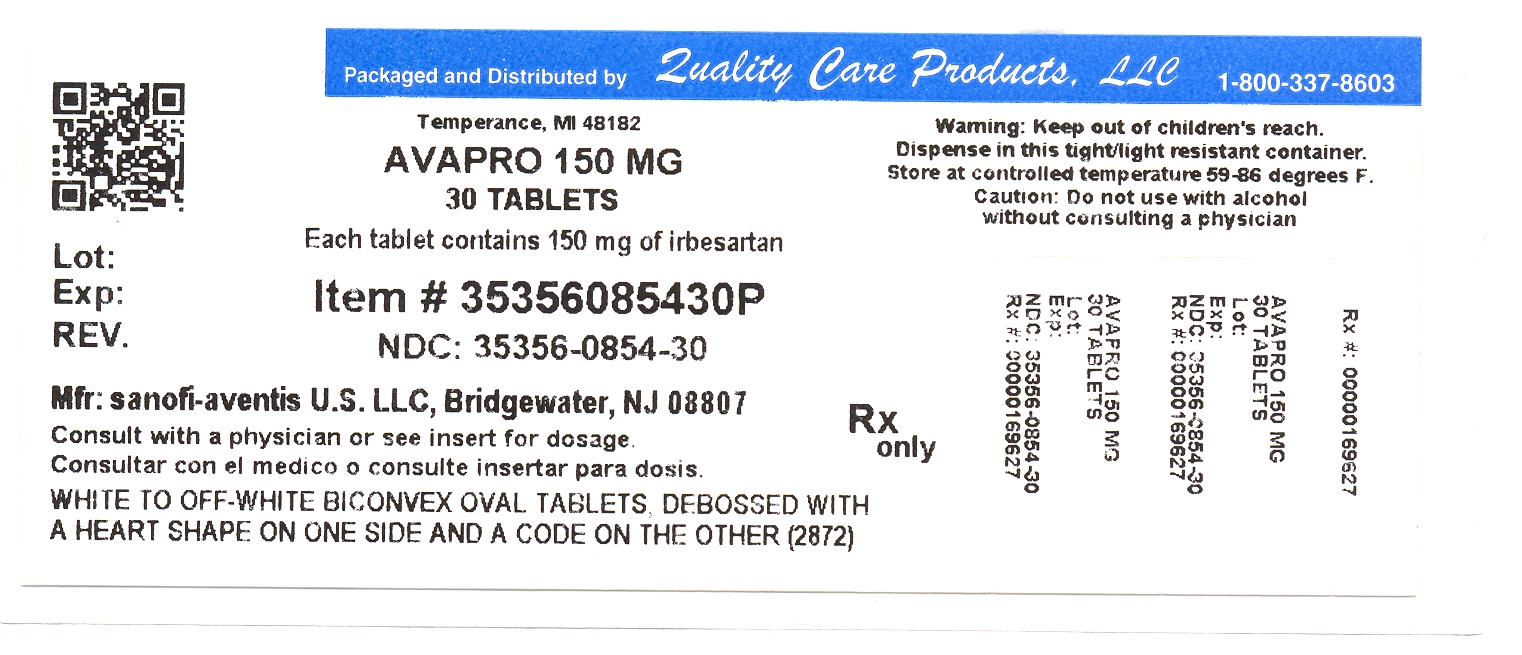![Avapro (Irbesartan) Tablet [Sanofi-aventis U.s. Llc] Avapro (Irbesartan) Tablet [Sanofi-aventis U.s. Llc]](/wp-content/themes/bootstrap/assets/img/loading2.gif)
Gabapentin Capsules, USP are given orally with or without food.
If gabapentin dose is reduced, discontinued or substituted with an alternative medication, this should be done gradually over a minimum of 1 week (a longer period may be needed at the discretion of the prescriber).
Postherpetic Neuralgia
In adults with postherpetic neuralgia, gabapentin therapy may be initiated as a single 300-mg dose on Day 1, 600 mg/day on Day 2 (divided BID), and 900 mg/day on Day 3 (divided TID). The dose can subsequently be titrated up as needed for pain relief to a daily dose of 1800 mg (divided TID). In clinical studies, efficacy was demonstrated over a range of doses from 1800 mg/day to 3600 mg/day with comparable effects across the dose range. Additional benefit of using doses greater than 1800 mg/day was not demonstrated.
Epilepsy
Gabapentin is recommended for add-on therapy in patients 3 years of age and older. Effectiveness in pediatric patients below the age of 3 years has not been established.
Patients >12 years of age: The effective dose of gabapentin is 900 to 1800 mg/day and given in divided doses (three times a day) using 300 or 400 mg capsules, or 600 or 800 mg tablets. The starting dose is 300 mg three times a day. If necessary, the dose may be increased using 300 or 400 mg capsules, or 600 or 800 mg tablets three times a day up to 1800 mg/day. Dosages up to 2400 mg/day have been well tolerated in long-term clinical studies. Doses of 3600 mg/day have also been administered to a small number of patients for a relatively short duration, and have been well tolerated. The maximum time between doses in the TID schedule should not exceed 12 hours.
Pediatric Patients Age 3–12 years: The starting dose should range from 10-15 mg/kg/day in 3 divided doses, and the effective dose reached by upward titration over a period of approximately 3 days. The effective dose of gabapentin in patients 5 years of age and older is 25–35 mg/kg/day and given in divided doses (three times a day). The effective dose in pediatric patients ages 3 and 4 years is 40 mg/kg/day and given in divided doses (three times a day) (see CLINICAL PHARMACOLOGY, Pediatrics.) Gabapentin may be administered as the oral solution, capsule, or tablet, or using combinations of these formulations. Dosages up to 50 mg/kg/day have been well-tolerated in a long-term clinical study. The maximum time interval between doses should not exceed 12 hours.
It is not necessary to monitor gabapentin plasma concentrations to optimize gabapentin therapy. Further, because there are no significant pharmacokinetic interactions among gabapentin and other commonly used antiepileptic drugs, the addition of gabapentin does not alter the plasma levels of these drugs appreciably.
If gabapentin is discontinued and/or an alternate anticonvulsant medication is added to the therapy, this should be done gradually over a minimum of 1 week.
Dosage in Renal Impairment
Creatinine clearance is difficult to measure in outpatients. In patients with stable renal function, creatinine clearance (CCr) can be reasonably well estimated using the equation of Cockcroft and Gault:
for females CCr=(0. 85)( 140-age)(weight)/[(72)(SCr)]
for males CCr=(140-age)(weight)/[(72)(SCr)]
where age is in years, weight is in kilograms and SCr is serum creatinine in mg/dL.
Dosage adjustment in patients ≥ 12 years of age with compromised renal function or undergoing hemodialysis is recommended as follows (see dosing recommendations above for effective doses in each indication).
TABLE 6. Gabapentin Dosage Based on Renal Function
Renal Function
Creatinine Clearance
(mL/min)
Total Daily
Dose Range
(mg/day)
Dose Regimen
(mg)
a For patients with creatinine clearance <15 mL/min, reduce daily dose in proportion to creatinine clearance (e.g., patients with a creatinine clearance of 7.5 mL/min should receive one-half the daily dose that patients with a creatinine clearance of 15 mL/min receive).
b Patients on hemodialysis should receive maintenance doses based on estimates of creatinine clearance as indicated in the upper portion of the table and a supplemental post-hemodialysis dose administered after each 4 hours of hemodialysis as indicated in the lower portion of the table.
≥60
900-3600
300 TID
400 TID
600 TID
800 TID
1200 TID
>30-59
400-1400
200 BID
300 BID
400 BID
500 BID
700 BID
>15-29
200-700
200 QD
300 QD
400 QD
500 QD
700 QD
15a
100-300
100 QD
125 QD
150 QD
200 QD
300 QD
Post-Hemodialysis Supplemental Dose (mg)b
Hemodialysis
125b
150b
200b
250b
350b
The use of gabapentin in patients <12 years of age with compromised renal function has not been studied.
Dosage in Elderly
Because elderly patients are more likely to have decreased renal function, care should be taken in dose selection, and dose should be adjusted based on creatinine clearance values in these patients.



![Avapro (Irbesartan) Tablet [Physicians Total Care, Inc.]](http://dailymed.nlm.nih.gov/dailymed/image.cfm?setid=4536ad0b-42f4-4bd1-83d4-467762291664&name=150mgpackagelabel.jpg)
![Avapro (Irbesartan) Tablet [Lake Erie Medical & Surgical Supply Dba Quality Care Products Llc]](http://dailymed.nlm.nih.gov/dailymed/image.cfm?setid=a65bf275-09f0-4f1f-983b-fd4e170a550b&name=Avapro150mgBristol.jpg)
![Avapro (Irbesartan) Tablet [Cardinal Health]](http://dailymed.nlm.nih.gov/dailymed/image.cfm?setid=299a7f2f-e3fa-4ec5-a33b-e40bf9ae5a0d&name=4cd668d2-8bba-43d2-a0e6-d1e9d2c0d04a-04.jpg)
![Avapro (Irbesartan) Tablet [Bryant Ranch Prepack]](http://dailymed.nlm.nih.gov/dailymed/image.cfm?setid=71a7a00c-6aa8-46ef-83de-96e3b0ad3f89&name=41591.jpg)
![Avapro (Irbesartan) Tablet [Bryant Ranch Prepack]](http://dailymed.nlm.nih.gov/dailymed/image.cfm?setid=8c73ef82-db67-48b1-abab-957cc8367299&name=33731.jpg)
![Avapro (Irbesartan) Tablet [Bristol-myers Squibb Company]](http://dailymed.nlm.nih.gov/dailymed/image.cfm?setid=b7f1a9ef-c7bb-465c-e4d7-a41395205cad&name=avapro-150mg-trade-lbl.jpg)
![Avapro (Irbesartan) Tablet [Sanofi-aventis U.s. Llc]](http://dailymed.nlm.nih.gov/dailymed/image.cfm?setid=b2df0e0e-43ba-47ab-b8f9-22c8010772ba&name=5b5a189d-c172-4dc2-b2fa-8fd28f8da1a1-06.jpg)